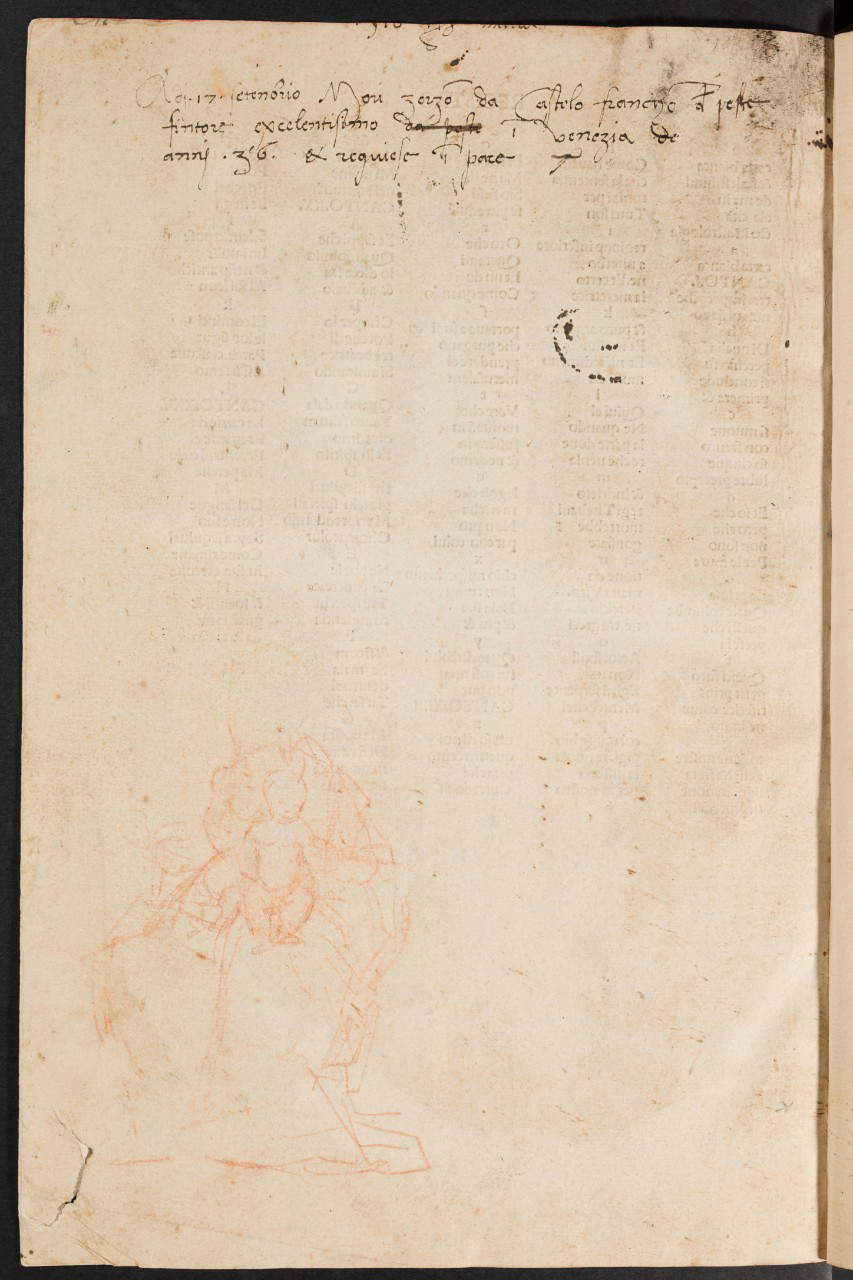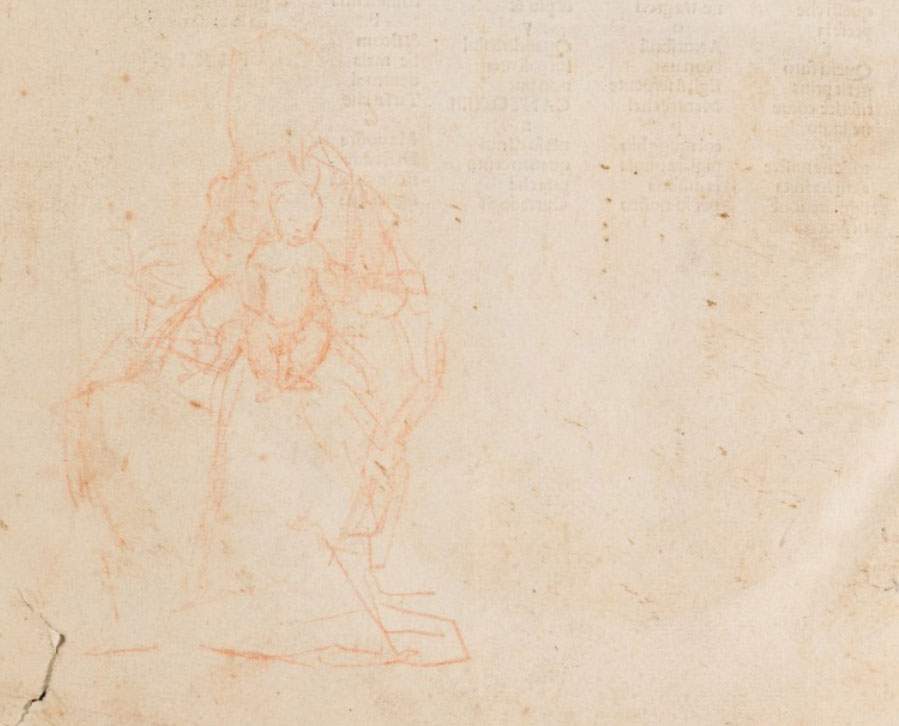Giorgione, the great master of the Venetian Renaissance, is increasingly in the spotlight these days. After the restoration of the Vecchia at the Gallerie dell’Accademia in Venice, another piece of news is sure to get scholars talking. Indeed, from theUniversity of Sydney (Australia) comes the announcement of the discovery of a drawing attributable to Giorgione (in the case, it would be the third known sheet by the Castelfranco artist). Not only that: the sheet also includes a note with the date of the painter’s death.
Author of the discovery is Kim Wilson, Academic Liaison Librarian at the Australian university: Wilson found the sheet, traced in sanguine and depicting a Madonna and Child (thought to be an image that predates paintings such as the Adorations in the National Gallery in Washington and the National Gallery in London), inside a copy of the Divine Comedy dating to 1497. On the upper edge of the sheet is an inscription that, in Venetian, declares that “Zorzo da Castelo Francho” died on “17 setembrio” of 1510, “de anni 36,” “from plague,” and closes with the wish “requiescat in pace.” The discovery was endorsed by Professor Jaynie Anderson of the University of Melbourne, a scholar of Venetian art who has spent several years studying the Castelfranco master: “this discovery,” she said, “will have transformative effects on the way the history of Venetian art is written.” The paper, Anderson added, “not only gives us the precise date of Giorgione’s death, but also indicates a date of his birth, providing the extremities of his life. This is very significant, because for centuries it was claimed that the artist’s biography was ’impossible.’ This finding will allow art historians to rewrite Giorgione’s place in history.”
Instead, Wilson explained the details of the discovery: the sheet was found “in a part of the book that one does not normally leaf through, and the drawing appeared to be the product of the sure hand of a master.” Moreover, “the fact that the drawing remained protected in the pages of the book for so long,” he added, “and then survived at least one binding, is a very fortunate event.” The inscription was screened by Nerida Newbigin, professor emeritus at the University of Sydney’s Department of Italianistics.
The discovery will be published on March 1 in a Burlington Magazine article that will bear the signatures of Wilson, Anderson, Newbigin and Julie Sommerfeldt, manager of the University of Sydney’s rare and special books collection, who said that “this surprising discovery underscores the potential of these fortuitous discoveries when working with rare books and bequest collections,” and that there are “hidden gems waiting to be discovered in libraries around the world.” The article will also suggest that perhaps Giorgione himself owned the edition of Dante Alighieri’s Commedia. However, it is not known when the book arrived at the university: in the records it is listed as part of a donation that arrived at the university sometime between 1914 and 1959, perhaps after 1928.
The drawing will be analyzed in March atAustralian Synchrotron laboratories using the technique of X-ray spectrophotometry to examine the ink and sanguine: the analysis could help scholars gain insight into Giorgione’s technique. Meanwhile, the University Library has digitized the entire Commedia, including the rediscovered folio. The digital copy will be available from February 27.
In the images: the full sheet and the detail of the Madonna and Child.
 |
 |
| The University of Sydney: we have discovered a rare drawing by Giorgione, including the date of his death |
Warning: the translation into English of the original Italian article was created using automatic tools. We undertake to review all articles, but we do not guarantee the total absence of inaccuracies in the translation due to the program. You can find the original by clicking on the ITA button. If you find any mistake,please contact us.